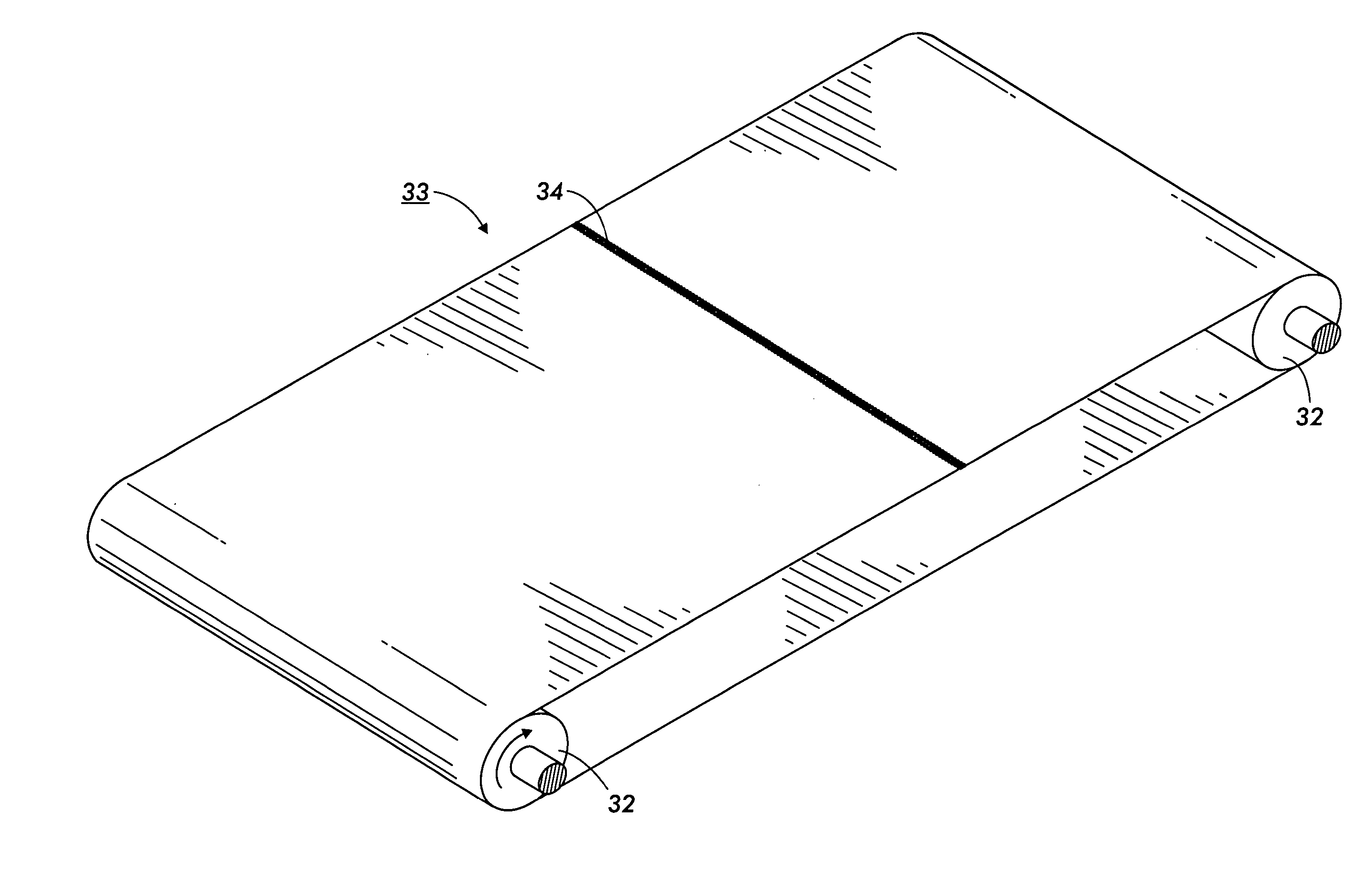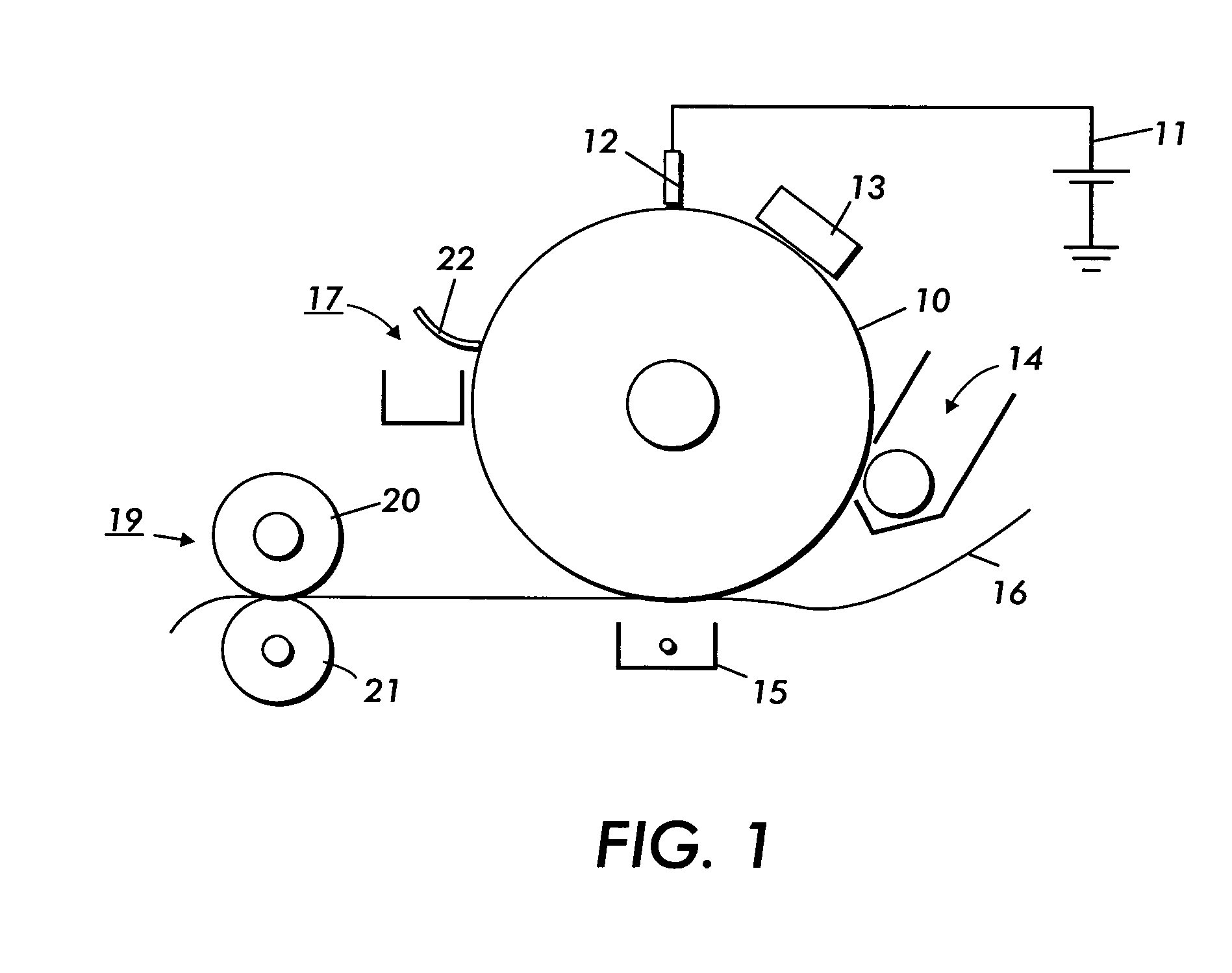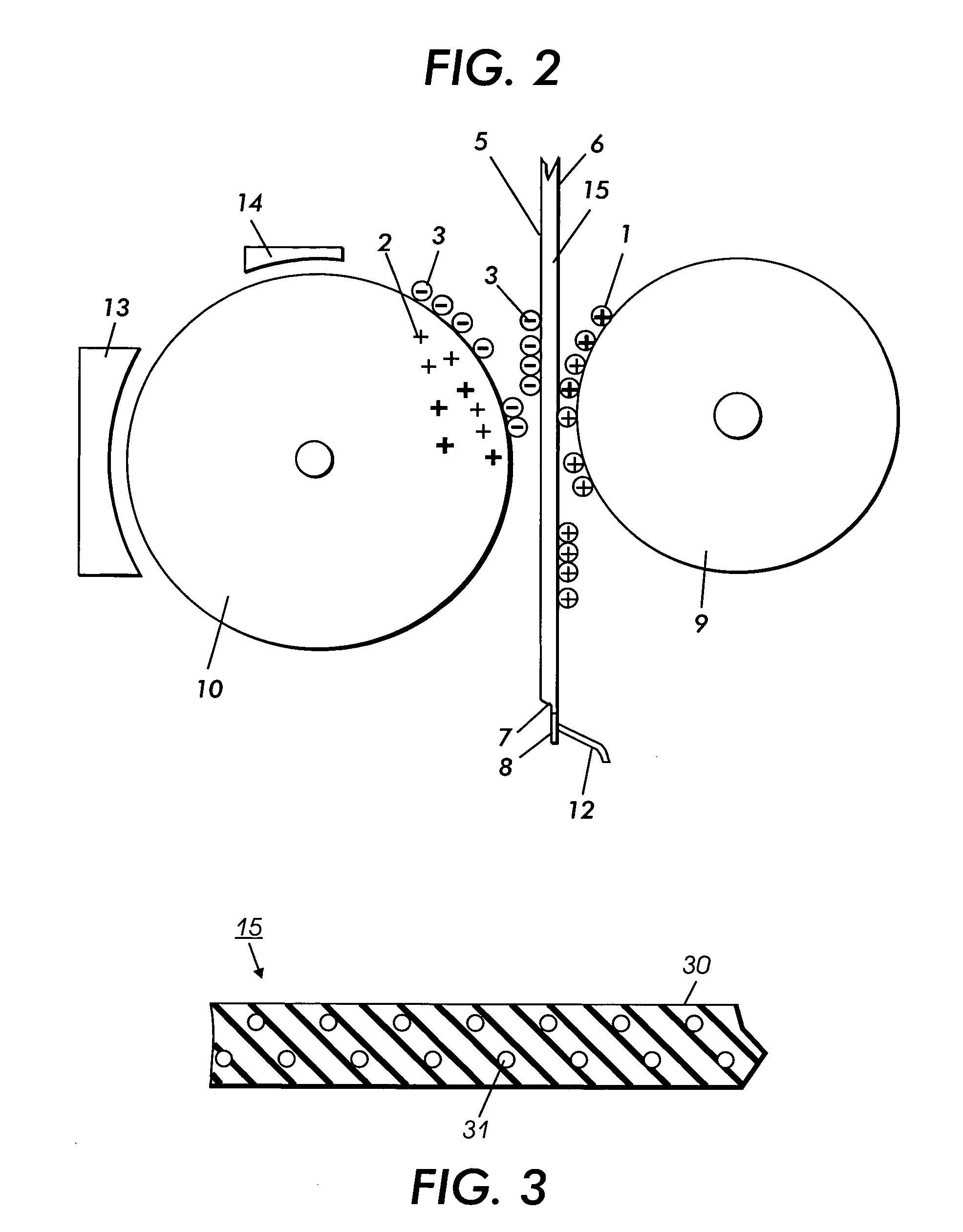Welded polyimide intermediate transfer belt and process for making the belt
a technology of intermediate transfer and polyimide, which is applied in the field of intermediate transfer members, can solve the problems of less than complete toner transfer, low-resolution images on the image receiving substrate, and image deterioration, and achieve the net manufacturing cost of producing the weldable intermediate transfer members, in embodiments, to reduce the effect of labor intensity
- Summary
- Abstract
- Description
- Claims
- Application Information
AI Technical Summary
Benefits of technology
Problems solved by technology
Method used
Image
Examples
example 1
Preparation of Weldable KAPTON® KJ Thermoplastic Polyaniline Filled Polyimide Intermediate Transfer Belts
[0058]A flexible seamed polyimide belt was prepared, using a rectangular cut sheet of a 4-mil thick KAPTON® KJ, a thermoplastic polyimide having a thermal contraction coefficient of 6.2×10−5 / ° C., a Glass Transition Temperature (Tg) of 210° C. (available from E.I. Du Pont de Nemours and Company), by overlapping the 2 opposite ends and ultrasonically welded, using 40 KHz frequency, into a seamed flexible polyimide belt. The molecular structure of this polyimide is given in formula (I) below:
[0059]
wherein, x=2 and y=2; and m and n are from about 10 to about 300.
example 2
Preparation of Weldable Polyaniline Filled IMIDEX® Thermoplastic Polyimide Intermediate Transfer Belts
[0060]Another flexible polyimide seamed belt was prepared in accordance to the seamed welding procedures described in Example 1, except that an alternate 4-mil thick thermoplastic polyimide, IMIDEX® (available from West Lake Plastics Company), having a thermal contraction coefficient of 6.1×10−5 / ° C., a Glass Transition Temperature (Tg) of 230° C., was used as the substrate. The molecular structure of IMIDEX® polyimide is shown in formula (II) below:
[0061]
wherein z=1, and q is from about 10 to about 300.
example 3
Preparation of Known Thermoset Polyimide Intermediate Transfer Belts
[0062]Commercially available polyimides, such as KAPTON® F, H, and R types available from DuPont and UPILEX® R and S types available from Ube Industries, LTD are thermoset polyimide and have excellent temperature stability beyond 400° C. The molecular structures of these thermoset polyimide substrates are presented in the following formulas (III), (IV), and (V):
[0063]
where n is a number of from about 10 to about 300.
[0064]With a thermal contraction coefficient of about 1.7×10−5 / ° C. to about 2.5×10−5 / ° C., it is almost 3.5 times greater than that of the KAPTON® KJ or IMIDEX®. The above polyimides are thermoset plastics, so they can not conveniently be ultrasonically welded into seamed flexible belts.
PUM
| Property | Measurement | Unit |
|---|---|---|
| frequencies | aaaaa | aaaaa |
| frequencies | aaaaa | aaaaa |
| thickness | aaaaa | aaaaa |
Abstract
Description
Claims
Application Information
 Login to View More
Login to View More - R&D
- Intellectual Property
- Life Sciences
- Materials
- Tech Scout
- Unparalleled Data Quality
- Higher Quality Content
- 60% Fewer Hallucinations
Browse by: Latest US Patents, China's latest patents, Technical Efficacy Thesaurus, Application Domain, Technology Topic, Popular Technical Reports.
© 2025 PatSnap. All rights reserved.Legal|Privacy policy|Modern Slavery Act Transparency Statement|Sitemap|About US| Contact US: help@patsnap.com



